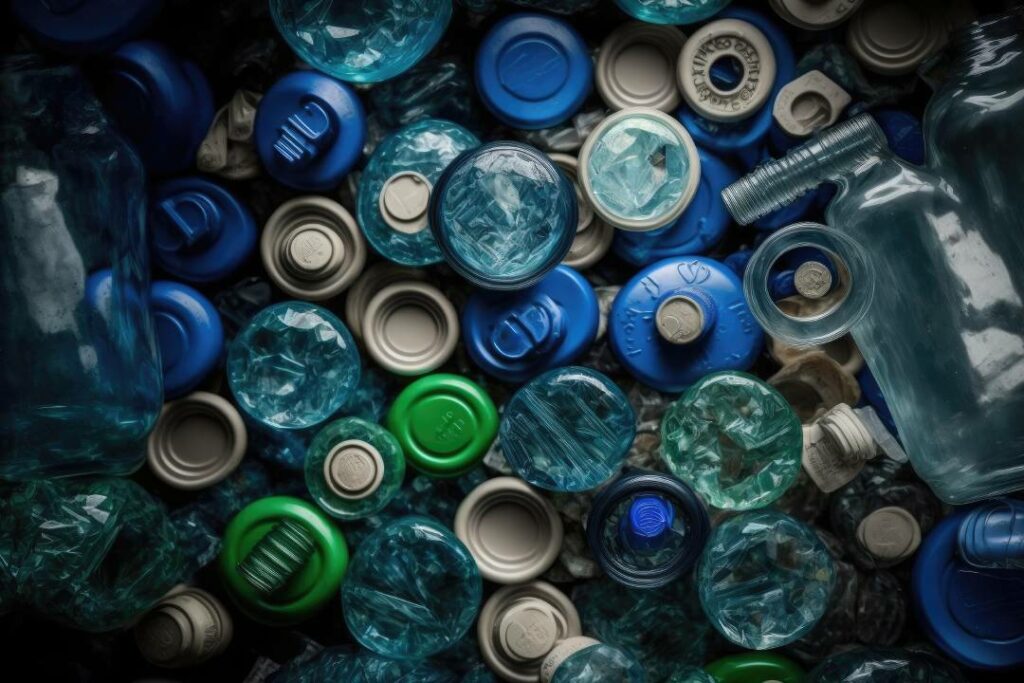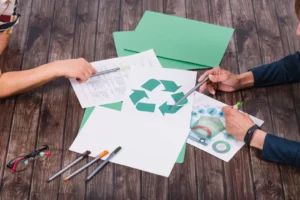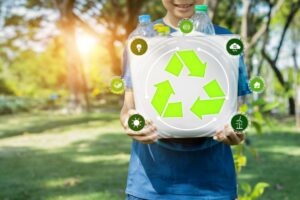In recent years, the prevalence of plastic materials has significantly increased in many aspects of everyday life.
As such, it is important to understand how long plastic takes to break down and decompose.
This article aims to provide an overview of the various factors that influence how quickly plastics break down and explores some potential solutions for reducing their environmental impact.
Here’s an article that’s going to explain how long it takes for plastic to break down.
What Are the Different Types Of Plastic?
Plastics are synthetic materials made from long molecules called polymers.
Different types of plastic have been developed and used for a variety of applications, including packaging, construction products and medical equipment.
The durability of plastics is one of their main advantages; however this also means that they can take a long time to degrade naturally in the environment.
Estimates suggest that non-biodegradable plastics may take up to 500 years or more to break down into smaller particles.
This has caused concern about the amount of plastic waste produced by humans and its potential impacts on ecosystems.
How Long Does It Take For Plastic To Break Down?
Plastic is a man-made material that does not occur naturally in the environment and takes hundreds of years to break down.
It can take anywhere from 450 to 1,000 years for plastic bags to decompose, while Styrofoam cups may take up to 50 years.
Single-use plastics such as straws, utensils, and water bottles are known to be particularly hazardous due to their inability to biodegrade quickly.
Studies have also shown that microplastics – tiny pieces of plastic less than five millimeters long – can remain suspended in oceans for centuries before breaking down into smaller particles called “microfibers” which eventually end up being consumed by marine life further complicating the issue.
The Effects Of Plastic Waste On The Environment
The effects of plastic waste on the environment can be significant.
Plastic takes a long time to break down, which means it remains in landfills or oceans for centuries.
In addition to its slow decomposition rate, plastic does not biodegrade and instead breaks into smaller pieces called microplastics that are then ingested by animals or absorbed into soil and water systems.
This can lead to an increase in pollutants in both terrestrial and aquatic ecosystems as well as cause harm to wildlife through ingestion of plastics, entanglement with debris, and disruption of hormonal balances due to chemicals leaching out of the material.
Furthermore, production of plastic emits large amounts of greenhouse gas emissions into the atmosphere contributing further to global warming.
As such, reducing reliance on plastic products is key to mitigating these impacts and preserving our planet’s health.
How To Reduce Plastic Waste
Plastic pollution plagues the planet, pervading our environment and poisoning wildlife. Permeating the land and sea alike, plastic is a persistent pollutant that takes centuries to degrade.
With its impacts extending far into the future, it is critical for us to take steps now to reduce our plastic waste footprint. By changing habits today and opting for less single-use plastics, we can help protect nature’s natural resources from further degradation due to plastic accumulation in our world’s ecosystem.
We must act fast – each day over 8 million tons of plastic enter oceans around the world, with only 9% of all plastic produced having been recycled. Employing more sustainable practices such as reusing containers instead of purchasing single-use ones or avoiding straws when possible are simple but effective ways to start reversing this trend towards environmental disaster.
To ensure a healthier tomorrow for ourselves and generations to come let us commit to reducing our reliance on single-use plastics today.
What Are the Alternatives To Single-Use Plastic
The breakdown of plastic can be a long and complex process, with different types of plastics decaying at vastly different rates. Generally speaking, non-biodegradable plastics may take hundreds to thousands of years to fully decompose in landfills or the natural environment.
In comparison, biodegradable plastics are designed to break down more quickly due to their chemical structure and additives that promote microbial activity; they usually take several months to years for full disintegration.
As such, reducing single-use plastic consumption is essential in order to lessen the impact on our planet’s ecosystems. The best way is to use alternative materials which degrade faster than traditional petroleum-based plastics is becoming increasingly popular as an environmental solution.
Conclusion
The use of plastic has been a part of our world for many years now, and it is time to take steps towards reducing its negative impact on the environment.
By taking simple actions such as using refillable containers instead of single-use plastics and recycling whenever possible, we can make positive changes in the amount of waste that ends up in landfills and oceans.
It is also important to be aware of what kinds of materials are biodegradable or compostable so that they can be used rather than plastic when necessary.
By making these small but significant adjustments, we can help move away from an overreliance on plastic and create a more sustainable future.







